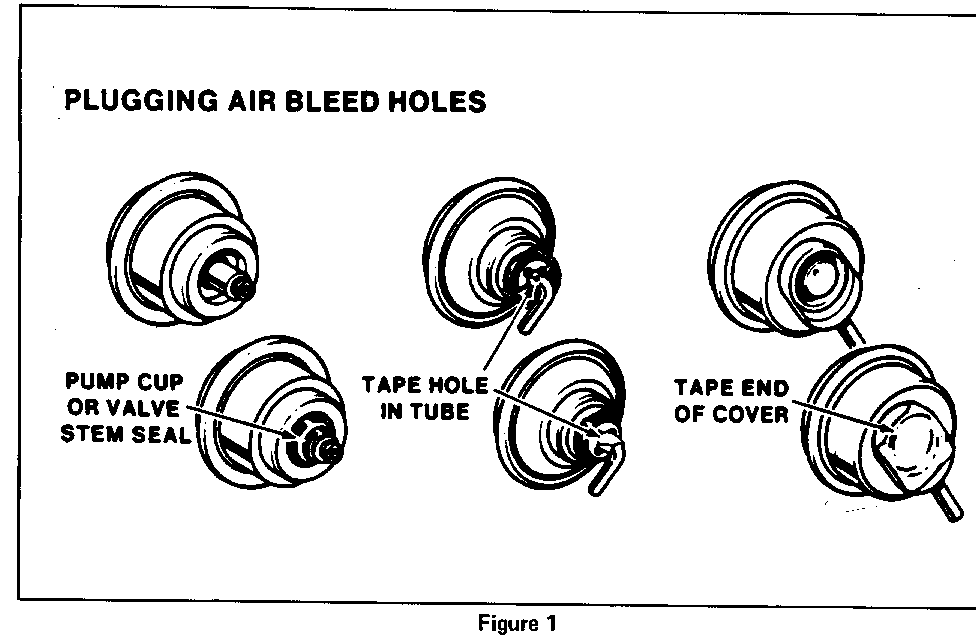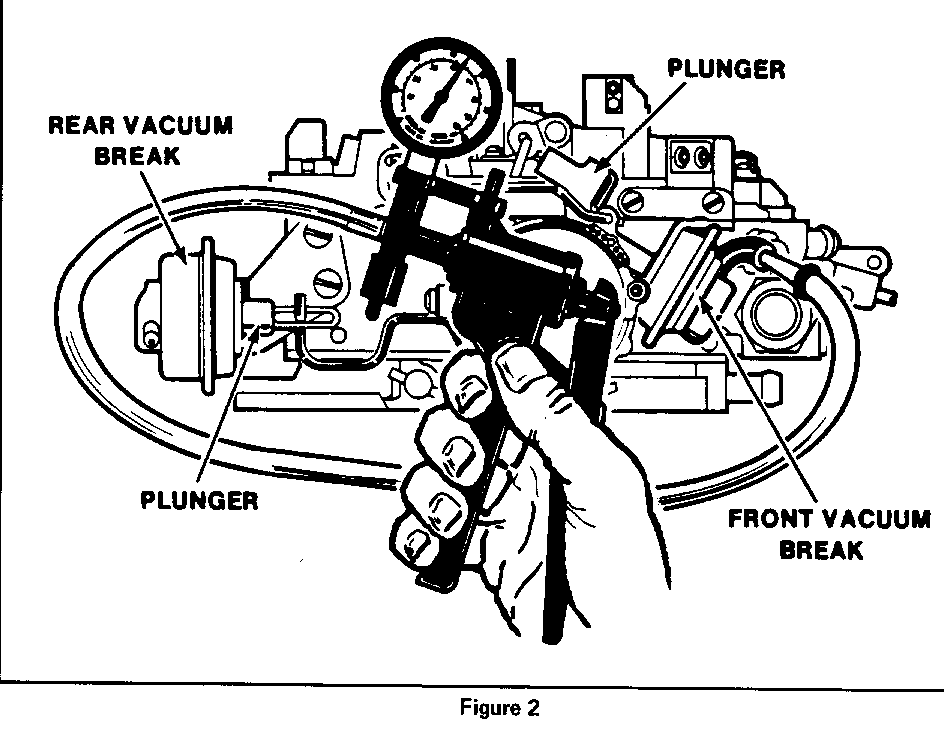CARBURETOR VACUUM BREAK TEST PROCEDURE

ALL CARBURETORS EQUIPPED WITH VACUUM BREAKS
"Please discard previous bulletin 84-6(Gasoline)-53 due to this revision."
Hard starting or poor warm-up performance on a carbureted engine may be due to a leaking vacuum break unit. The vacuum break, sometimes called the "choke pull-off", opens the carburetor choke valve against the tension of the thermostatic choke coil during cold engine start-up. A vacuum break unit with a leaking diaphragm will not open the choke valve to the proper position, and may cause a cold engine to load up with fuel, resulting in black exhaust smoke.
VACUUM BREAK TESTING PROCEDURE:
1. Determine whether the vacuum break has a bleed orifice. If it does, it should be plugged as shown. See Figure 1 for possible locations.
Most rear or secondary side units have a bleed. Most front or primary side units do not.
2. Use hand-held vacuum pump to apply 15" Hg (5lkPa) vacuum to the vacuum break, (Figure 2).
A. The vacuum break plunger should move full travel. Apply finger pressure to plunger to see that it has moved through full travel. If not, replace the vacuum break and adjust to specification. The labor operation time for replacing the vacuum break unit includes adjustment.
B. The vacuum break diaphragm should hold vacuum for at least twenty seconds. If it does not, replace the vacuum break and adjust to specification.
REMINDER: The carburetor vacuum break is covered under the Five-Year/50,000-Mile Emission Control Systems Warranty. Refer to the "Pontiac Service Policies and Procedures Manual."


General Motors bulletins are intended for use by professional technicians, not a "do-it-yourselfer". They are written to inform those technicians of conditions that may occur on some vehicles, or to provide information that could assist in the proper service of a vehicle. Properly trained technicians have the equipment, tools, safety instructions and know-how to do a job properly and safely. If a condition is described, do not assume that the bulletin applies to your vehicle, or that your vehicle will have that condition. See a General Motors dealer servicing your brand of General Motors vehicle for information on whether your vehicle may benefit from the information.
